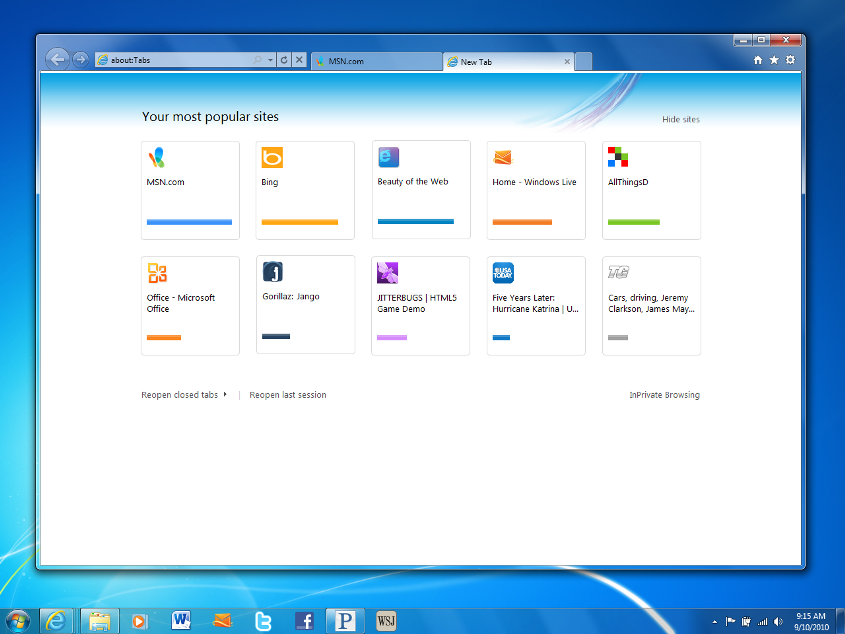Microsoft Says Chrome Market Share Records are Misleading
Part of the entertainment of watching browser market share statistics is the interpretation of data, the consideration of validity as well as the reaction of browser makers.
Obviously, statistics carry marketing value in a negative or positive view and there is a clear motivation to comment on numbers that are primarily published by NetApplications and StatCounter (even if there are plenty more sources such as Clicky, StatOwl, or W3 Browser Statistics).
While Mozilla and Google have been largely quiet about market shares (but certainly care, as mentioned by Mozilla CTO in this blog post), Microsoft has used market share numbers only from Net Applications to highlight the decrease of importance of IE6 and the runaway success of IE9, especially on the dedicated blog Exploring IE. Last week, Microsoft reacted to data published by StatCounter that Chrome has exceeded IE market share for the first time. Microsoft's opinion is that StatCounter's data are slanted and incorrect and best. The reason? StatCounter evenly counts market share across its user base and does not consider geoweighting. To make matters worse, StatCounter also considers Google's prerendering feature, which obviously puts a positive spin on Google's data.
Without going too deep into analytics, Microsoft complains that the pages that are pre-rendered in Google's Omnibox count for market share at StatCounter. In February, pre-rendering counted for 4.3 percent of market share, Microsoft says. Also, Microsoft believes that, depending on the available data set, browser market share data has to be weighed against the entire Internet population. For example, China (where Microsoft dominates the browser market share arena) has 21.39 percent of the Internet population, according to CIA Internet user statistics, but it has only 0.96 percent in StatCounter's data.
According to Internet World Stats, the CIA estimate may be a bit conservative, as the user share in China could actually approach 25 percent. So, does Microsoft has a point? Sure. But we should not forget that NetApplications has also its problems as the scientific process of data collection isn't entirely transparent with missing margins of error, for example. My personal gripe with NetApplications has been that the freely available data change on a frequent basis and the company has denied consistent access to the same data sets over time. For example, Net Applications has strongly limited access to market share data to the fragmented versions of IE. Were they removed because of monetization reasons? Because of integration into IE overall? We have no idea as the company declined to comment. I cannot help but have some doubt about the data distribution between browser versions and within a browser itself. I am not accusing NetApplications of shady data publications, but there are clearly inconsistencies that make it difficult from the outside to assess the value of the data.
Like NetApplications, StatCounter has its issues as well. It is common sense to assume that no market share estimate can be entirely correct and there will always be opportunities to criticize the data published and interpret the data in the way you prefer. Those on the outside have to remember that browser market share statistics are merely trend indicators. In any case, absolute numbers should always be taken with a grain of salt.
Get Tom's Hardware's best news and in-depth reviews, straight to your inbox.

Douglas Perry was a freelance writer for Tom's Hardware covering semiconductors, storage technology, quantum computing, and processor power delivery. He has authored several books and is currently an editor for The Oregonian/OregonLive.
-
tomfreak The butt-hurting of Microsoft to admit its defeat is strong here. Why does they care for this, if their browser is good, they dont have to respond about this statcounter. The user feedback will speaks itselfs.Reply -
hmm, well microsoft also forgot that Internet explorer is installed on every device. so what if statcounter discounted china in the approximation of browser share? It shouldn't even be that close in the first place.Reply
Chrome, Firefox is the superior browser regardless of what microsoft says -
lahawzel "Microsoft's opinion is that StatCounter's data are slanted and incorrect and best. "Reply
I see that the best data is slanted and incorrect over here. :P -
lahawzel @The first three commenters:Reply
You guys forget that IE is actually decent now. Nothing like the old interweb exploder 6. Although I'd still never use it due to the lack of useful plugins, it's no longer objectively bad in every possible aspect. Heck, it even beats Firefox and Chrome in Flash while having strong showings in HTML5 compliance and acceleration.
And for the average user, using IE instead of Chrome or Firefox to browse facebook is not going give them a substantially different experience. Many people who install chrome or FF don't even take advantage of the plugins at all; they simply think "well it's better" and use the vanilla install, perceiving web browsing as being overall faster and better when the difference is objectively negligible. -
synd The only misleading thing here is IE's security, speed and stability. No one will ever use it if he knew how much better Chrome/Firefox/Opera are.Reply -
theuniquegamer If i were the ceo of amd/nvidia then also i can say that my rival company's market share records are misleading (cause we sell a large no of gpus). Believe it or not MS the latest chrome and firefox are better than ieReply -
memadmax The numbers are prolly skewed anyways as more and more people turn on script blocking, ad blocks etc.Reply -
xerroz I often wonder if people have ever used IE9. I like to think that when hating on IE they're referring to IE6 because IE9 is quite a decent browserReply -
billybobser Microsoft comes with most installations, Chrome piggy backs on to other software. Firefox/Opera just stand in their own magnificence.Reply
Chromes growth has nothing to do with it's technical accomplishments, but more to to with having to decline it at every turn when installing programs.
That stats are misleading, and Tom's seems to be in a chrome love in.
